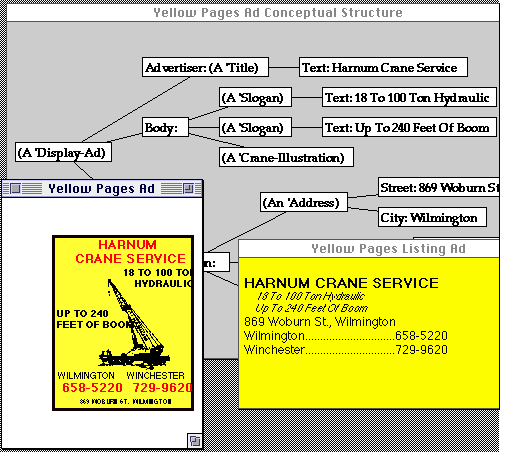

The goal of a graphic designer or multimedia designer is often to create a graphic artifact that serves to communicate some information to a viewer. The designer must encode his or her communication intentions in some structured representation of media objects that reside in a graphical editor.
The problem is that the current generation of graphic editors keeps only the results of design choices, that is, only the arrangement of media elements the designer has chosen. This is fragile, because if any of the assumptions responsible for the current set of graphic choices changes, the design may no longer be valid as a solution to its communication goals. If, for example, the amount of space on the screen or page changes, the correct response to such a change is not simply to stretch or shrink the design, but to change decisions about typeface, aspect ratio or placement of elements. The designer must redesign the artifact "as if" the new situation had been present from the beginning, while preserving as much of the original reasoning [not necessarily the original data!] as possible. This process is tedious and error-prone, and it is here that computer assistance could be of real help to the designer.
Culturally, designers are comfortable with direct manipulation of the visual elements of a design, and not comfortable at all with textual input of abstract concepts. So a possible approach might be to use concrete visual examples as the representation of abstract concepts in the domain of visual design.
back to ...  Table of Contents
Table of Contents  Watch What I Do
Watch What I Do